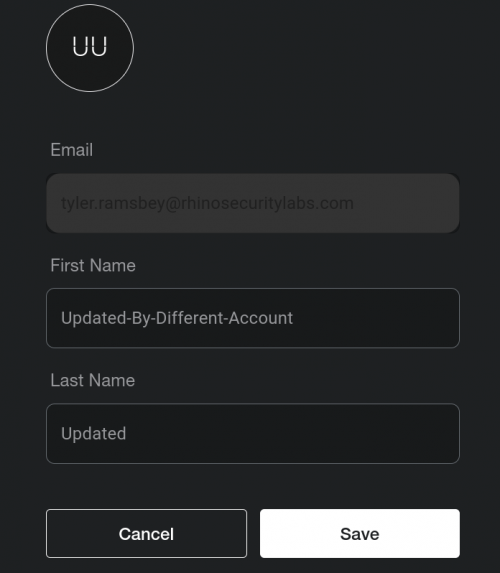
2024-8-6 20:0:0 Author: rhinosecuritylabs.com(查看原文) 阅读量:4 收藏
Overview of Vulnerabilities
During research on the Vestaboard web platform, the Rhino research team identified three instances of Broken Access Controls.
- Read-Access to other Vestaboards.
- Ability to update names of other users.
- Privilege escalation from Admin to Owner.
Upon disclosure, Vestaboard responded promptly and fully remediated the identified vulnerabilities.
What is Vestaboard?
Vestaboard is a smart messaging display that allows users to send and display messages. Unlike traditional displays, Vestaboard combines physical and digital elements to create a unique visual experience. Users can send messages, create designs, display real-time information, and integrate with various applications. Vestaboard can be controlled from a mobile application or web interface–our research was performed on the web interface.
1. Read-Access to other Vestaboards
Vestaboard provides the ability to share Vestaboard content with others. The generated URL allows anyone to access the Vestaboard content if they have the unique Board ID in this format: https://web.vestaboard.com/simulator/[board-id]. When a user logs into Vestaboard on the web interface, the Board ID is passed in the URL. Consequently, it’s possible to obtain the Board ID of other users by viewing the user’s browser history or finding it in various logs. Some boards can be discovered via this Google search: “site:web.vestaboard.com/simulator”.
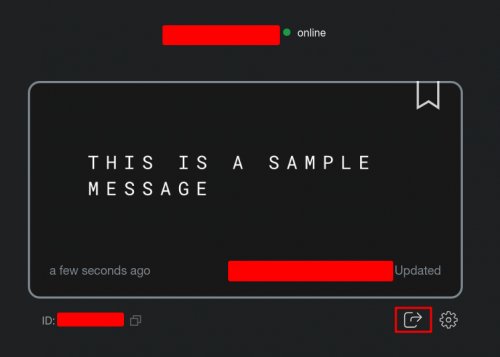
The image above shows the “share” button to generate the URL.
With access to a Board ID, an unauthenticated attacker has persistent access to all content on the Vestaboard. Since Vestaboard can be integrated with company-specific channels (such as Slack channels) this could lead to sensitive information being leaked.
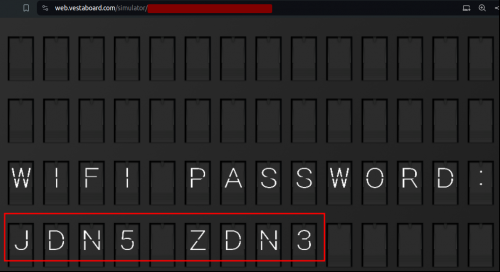
The image above shows a password on the target Vestaboard being viewed by an unauthenticated attacker.
2. Ability to Update Names of Other Users
We discovered broken access control that allows attackers to update the first and last name of users in other tenants. By creating a free user account unrelated to the target and updating the account’s profile information, it sends a request to the /graphql endpoint. This request includes an input for the user’s ID and does not correlate the permissions between the authenticated JWT and user being targeted. If this ID is modified to target another user, the request is successful and the target user’s name is updated.
Our attempts to increase the impact by updating the victim’s email or password were unsuccessful. Vestaboard requires re-authentication for updating the email/password for an account. This defense-in-depth practice prevented us from facilitating account takeover.

The image above shows the attacker targeting another account by replacing the “id” parameter in the POST request.
This update affects the targeted user’s primary account so the change is reflected in every Vestaboard tenant they are in.
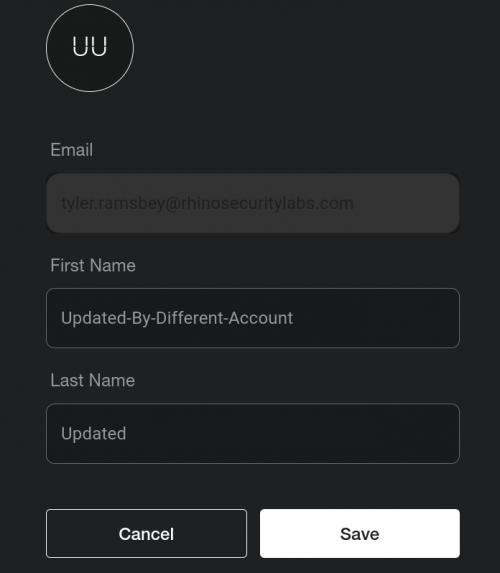
The image above shows the successful name change of the victim.
3. Privilege Escalation from Admin to Owner
In the Vestaboard platform there are three different user roles:
- User: Create, schedule, and edit messages.
- Admin: Set quiet hours, time zones, and manage users.
- Owner: Delete messages, delete the Vestaboard, manage billing, and transfer ownership. Vestaboard is designed to only allow one Owner per tenant.
Since Admins have permission to manage users, they can modify roles to change a User to an Admin from the web interface.
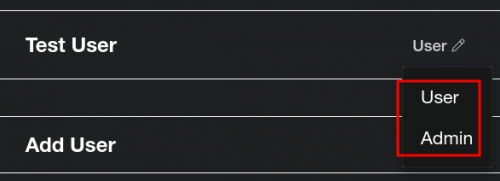
The image above shows the Admin’s ability to modify the User and Admin roles.
The Admin cannot make another user the Owner since the Owner is an elevated role with greater access to the Vestaboard tenant. By changing the role of another user and capturing the request with Burp Suite, it’s possible to manually add the Owner role and elevate permissions of an account from Admin to Owner. The new Owner then has full tenant access.

The image above shows us manually adding the “Owner” role in the request.
Conclusion
Vestaboard not only fixed the vulnerabilities we reported to them but also served as an example of how vendors should work with security researchers. We want to sincerely thank Vestaboard for their quick response to patch these instances of broken access control.
As always, feel free to follow us on Twitter or LinkedIn and join our Discord server for more releases and blog posts.
Twitter: https://twitter.com/rhinosecurity
LinkedIn: https://www.linkedin.com/company/rhino-security-labs/
Discord: https://discord.gg/TUuH26G5
Researcher/Author: https://youtube.com/@TylerRamsbey
Disclosure Timeline
| Date | Event |
| 11/15/2023 | Issues reported to Vestaboard |
| 11/15/2023 | Vestaboard acknowledged the vulnerability and began working on a fix |
| 12/06/2023 | Vestaboard releases patch to address the vulnerabilities |
| 08/06/2024 | Rhino published details on vulnerabilities |
如有侵权请联系:admin#unsafe.sh